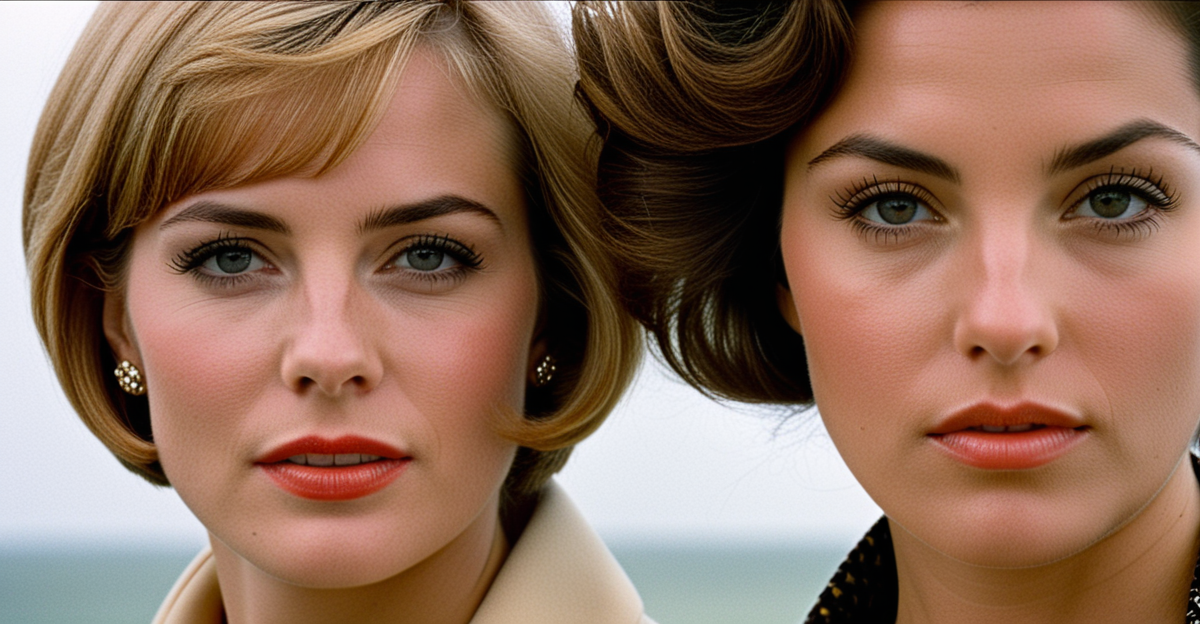Chronological Timeline of British Women’s Fashion
British fashion history offers a rich, decade-by-decade overview that charts a clear timeline of fashion evolution. Each era presents distinct characteristics reflecting broader social and cultural shifts. Beginning with the 1920s flapper revolution, British women’s fashion embraced daring hemlines and dropped waists, symbolizing newfound freedom. Moving into the 1930s, elegance and refinement guided the style, with bias-cut gowns emphasizing femininity.
The 1940s wartime utility fashion introduced practical, durable clothing due to material shortages, followed by the 1950s post-war new look featuring cinched waists and full skirts, signaling a return to opulence. The 1960s brought the mod movement, with bold patterns and mini skirts reflecting youthful rebellion and optimism. In the 1970s, British fashion embraced a bohemian spirit, favoring flowing fabrics and ethnic influences.
Also read : What Are the Best Tips for Shopping UK Women’s Fashion on a Budget?
By the 1980s, power dressing dominated, characterized by sharp tailoring and shoulder pads, signaling women’s growing presence in the workforce. The 1990s marked a shift to minimalism, with simpler lines and muted palettes. Throughout the decades, notable milestones—such as shifts triggered by economic or social change—have continuously shaped British women’s fashion, making it a vibrant, evolving tapestry.
Influential Designers and Iconic Garments Across the Decades
British designers have played a pivotal role in shaping the timeline of fashion evolution with their innovative creations and defining garments. From the mid-20th century, figures like Mary Quant revolutionized style by popularizing the mini skirt in the 1960s, a key item symbolizing youth culture and liberation. Similarly, Vivienne Westwood brought punk influences to mainstream fashion in the 1970s, creating rebellious looks that challenged societal norms.
Also to discover : How Can British Women’s Fashion Evolve with Sustainability at Its Core?
Iconic fashion pieces often mark notable milestones in British fashion history. For example, the structured power suits of the 1980s, championed by designers such as Gieves & Hawkes, emphasized shoulder pads and sharp tailoring, underscoring women’s evolving roles in the workplace. This era highlighted how British designers not only contributed to aesthetics but also mirrored social change in their epoch-defining garments.
The decade-by-decade overview also includes classic staples like Alexander McQueen’s dramatic gowns, blending tradition and modernity. These designers influenced broader historical trends by setting styles that transcended time, making their signature looks timeless symbols within British fashion history. Their work continues to inspire contemporary designers, securing a lasting legacy in fashion’s ongoing timeline.
Cultural and Societal Influences on Fashion Changes
British fashion history reflects profound societal change, with clothing styles deeply intertwined with shifts in British culture and women’s evolving roles. For example, during wartime, especially World War II, fabric rationing and practicality led to the rise of utility clothing—a stark departure from previous opulence. These restrictions shaped a new aesthetic emphasizing durability and function, while symbolizing resilience.
Politics and economic fluctuations also influenced the timeline of fashion evolution. The austerity of the post-war era gave way to the lavish “New Look,” demonstrating optimism and recovery. Social movements, including feminist campaigns, propelled changes in women’s fashion, encouraging more liberating silhouettes and garments that reflected independence, such as trousers and power suits.
Women’s roles in society directly impacted style choices. The increasing presence of women in the workforce during the 1980s, for instance, popularized structured, sharp tailoring known as power dressing, embodying both professionalism and authority. Through this lens, fashion mirrors social values and transformations, showcasing how British culture and societal change continually redefine women’s clothing preferences and identities.
Decade Highlights: Style Trends from the 1920s to the Present
British fashion history unfolds vividly through distinct decade-by-decade overview of evolving styles. The 1920s flapper dresses revolutionized women’s wardrobes with dropped waists and exuberance, embodying liberation. Moving into the 1930s, elegance defined the era, with an emphasis on sophistication and sleek lines.
The wartime utility clothing of the 1940s emerged from necessity, prioritizing practicality amid material rationing. In contrast, the post-war new look of the 1950s reintroduced luxury with cinched waists and full skirts, symbolizing renewal and optimism. The 1960s mod movement embraced bold patterns and mini skirts, capturing youthful rebellion and energy, while the 1970s favored a bohemian spirit with flowing fabrics and ethnic prints, mirroring cultural shifts.
By the 1980s, power dressing became emblematic, with sharp tailoring and pronounced shoulder pads reflecting women’s expanding roles in the workforce. This era’s bold silhouettes contrasted the 1990s minimalist style focused on simplicity and muted tones.
The timeline of fashion evolution reveals continual transitions shaped by social, cultural, and economic influences, illustrating how each decade’s style trends remain interlinked yet uniquely expressive. Understanding these highlights enriches appreciation for the dynamic progression of British women’s fashion.
Chronological Timeline of British Women’s Fashion
British fashion history reveals a rich timeline of fashion evolution marked by distinctive eras, each with defining characteristics that reflect broader societal moods. The 1920s introduced the flapper dresses, characterized by dropped waists and shorter hemlines. This decade symbolized women’s liberation and modernization.
Transitioning into the 1930s, elegance and sophistication dominated, with sleek silhouettes and bias cuts that emphasized femininity and refinement. The 1940s brought wartime utility clothing, necessitated by fabric rationing and practicality during World War II. This decade-by-decade overview highlights how clothing adapted under constraints yet retained subtle style elements.
Post-war optimism returned in the 1950s with the New Look—full skirts and cinched waists that celebrated luxury and renewal. The 1960s witnessed the energetic 1960s mod movement; bold patterns and mini skirts defined youthful rebellion. The 1970s embraced a bohemian spirit with flowing fabrics and ethnic influences.
The timeline of fashion evolution continued into the 1980s, characterized by sharp tailoring and power dressing reflecting women’s growing workforce presence. Finally, the 1990s favored minimalism with cleaner lines and muted tones, rounding out this succinct decade-by-decade overview of British women’s fashion.
Chronological Timeline of British Women’s Fashion
British fashion history unfolds as a rich timeline of fashion evolution, marked by distinct eras that each tell a story through style. A decade-by-decade overview reveals how clothing not only changes in silhouette and fabric but also mirrors societal moods and shifts. The 1920s flapper dresses introduced shorter hemlines and looser fits, symbolizing liberation and modernity for women.
The 1930s refined this with elegant, bias-cut gowns that emphasized femininity. A stark transition occurred in the 1940s wartime years, when utility clothing became essential due to rationing. Practicality overtook extravagance, yet subtle tailoring gave shape and identity to restraint. Post-war optimism rebounded in the 1950s with Christian Dior’s New Look: cinched waists and full skirts represented luxury regained.
The 1960s mod movement further altered fashion’s course with mini skirts and bold patterns, defining youthful rebellion. Moving into the 1970s, British fashion embraced a bohemian flair, reflecting cultural openness with flowing, ethnic-inspired textiles. The 1980s power dressing era responded to women’s increased workforce presence, adopting sharp tailoring and expansive silhouettes. Finally, the 1990s shifted focus to minimalism, favoring simple lines and muted tones, closing the century’s evolving timeline of fashion evolution.







